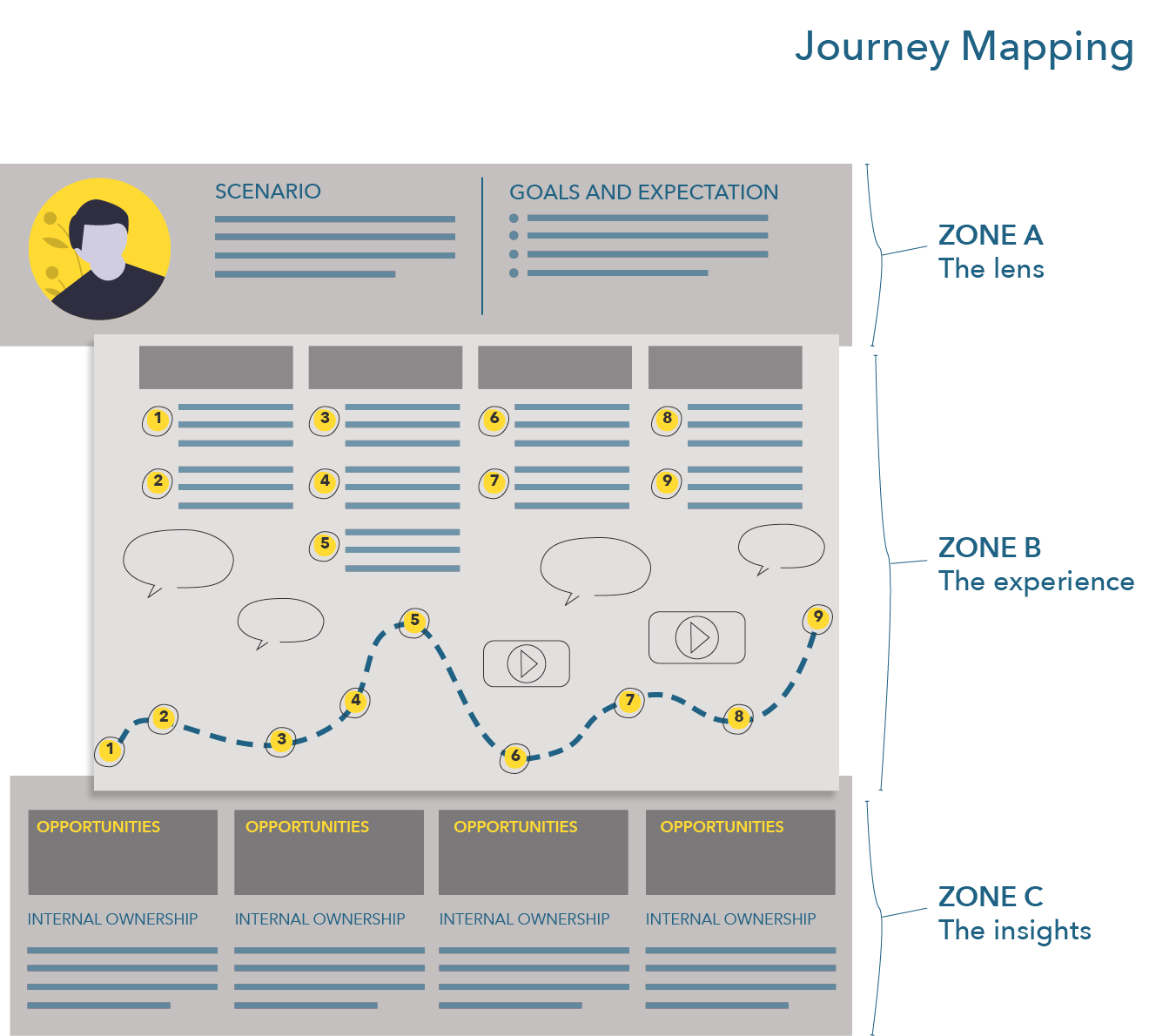Journey Mapping
Now that we have the vocabulary for these concepts, it’s time to turn our attention to using them in practice. The journeys and ZMOTs are generic ways to understand how consumers go about buying products. Knowing how consumers conceptually move from a trigger to making a purchase to becoming loyal to a brand or product might be interesting in itself, but it is much more useful if we can actually use this in real-life campaigns. Effective strategies demand a tailored understanding. We cannot stay at a conceptual level. We need to translate them to real-life experiences. To do so, we can perform journey mapping.
A journey map is a visual representation of the journey of a consumer. It brings together the conceptual tools we have seen in this chapter: persona, consumer journey, and moments of truth. Journey maps vary based on segments/personas. Each persona represents a different consumer segment. These segments will go about buying products differently. Think about, for example, how you go about buying products and how your parents go about buying products.
Figure 2.8 Journey Mapping / Adapted from nngroup.com

Journey maps exist in a wide range of shapes and forms. They all, however, share some common elements:
- the persona
- conceptual stages from a journey (e.g., trigger, active evaluation, purchase, and post-purchase; or awareness, consideration, purchase, and loyalty)
- concrete actions consumers take at each of these stages
- touchpoints that they encounter (in this course, I strongly encourage you to include yours and those of others, i.e., this is a consumer journey, you should be thinking more broadly than only your firm)
- opportunities associated with the aforementioned actions
Nelson Norman Group presents a clear example of this kind of journey template.
Journey maps are useful. They help you understand how consumers move through their journeys to address their needs and problems. Each action they take represents an opportunity for your brand to create a connection with a consumer. A clear understanding of the concrete steps that consumers take to buy products should be the starting point of the creation of your marketing campaigns. What do consumers do at the awareness stage? How can your brand support their actions? Do consumers search for specific things? What about at the active evaluation stage? In the next chapter, we examine how firms can position websites on specific searches. This will help create a bridge between what consumers are doing online and how we can answer their search queries.
